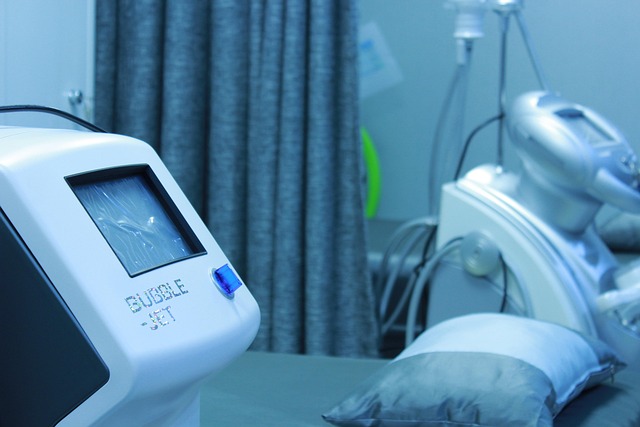Laser skin tag removal procedure is a quick, non-invasive treatment using concentrated light beams to destroy skin tags, offering minimal bleeding and lower risk of scarring or hyperpigmentation compared to traditional methods. Although generally less painful, slight tingling or burning sensations may occur. Advanced technology and qualified specialists minimize discomfort and ensure accuracy, enabling individuals to resume daily activities faster with reduced complications. Safe when performed by professionals, but those with certain skin conditions should consult healthcare providers first.
“Considering laser skin tag removal? This comprehensive guide explores the entire process, focusing on the question: is it painful? We break down the procedure, from understanding the technology behind it to demystifying the pain levels involved. Additionally, we compare it with traditional methods, discuss safety measures, and highlight potential side effects. By the end, you’ll have a clear picture of what to expect during this non-invasive skin treatment.”
- Understanding Laser Skin Tag Removal
- The Pain Factor: What to Expect
- Comparison with Traditional Methods
- Safety and Side Effects of Laser Treatment
Understanding Laser Skin Tag Removal

Laser skin tag removal is a non-invasive procedure that utilizes concentrated beams of light to target and destroy skin tags. This modern approach offers an alternative to traditional methods like shaving or manual removal, which can be time-consuming and may cause discomfort or even scarring. The laser procedure is typically quick, with most sessions lasting between 15 to 30 minutes, depending on the number of skin tags being treated.
During the private skin tag removal process in Gillingham or Wolverhampton skin tag clinic, a trained professional will use a high-tech laser device to emit light at specific wavelengths that penetrate the skin and target the blood vessels within the skin tag. This targeted destruction leads to minimal bleeding and a reduced risk of post-inflammatory hyperpigmentation compared to other methods. Laser removal is considered effective for most types of skin tags, though multiple sessions might be required for larger or more mature tags. Compared to shaving, laser treatment offers longer-lasting results, making it a popular choice for those seeking permanent solutions to unwanted skin tags.
The Pain Factor: What to Expect

The Pain Factor: What to Expect
When it comes to laser skin tag removal, understanding the pain factor is essential before undergoing the procedure. Unlike traditional methods that can be quite uncomfortable, laser treatments are generally considered less painful. The reason for this lies in the advanced technology used, which targets the skin tags with precision while minimizing damage to surrounding tissue.
During the laser skin tag removal procedure, a specialized device emits concentrated light energy onto the target area, effectively destroying the skin tag. While some individuals may experience a slight tingling or burning sensation, it’s usually well-tolerated and significantly milder than other methods. The actual pain varies from person to person, depending on factors like the size and number of skin tags being treated. Private skin tag removal Canterbury or laser skin tag removal Bradford clinics often employ numbing creams or topical anesthetics to further reduce any potential discomfort for a more comfortable experience.
Comparison with Traditional Methods

When compared to traditional methods of skin tag removal like surgery or harsh chemicals, laser skin tag removal offers a more precise and less invasive procedure. Traditional methods often leave scars, cause discomfort, or result in prolonged healing times. In contrast, laser treatments use concentrated light energy to target and destroy skin tags with minimal damage to the surrounding skin. This not only reduces pain but also speeds up recovery.
The latest advancements in laser skin tag removal have made this procedure even more effective and accessible. At reputable clinics like Bradford Skin Tag Clinic, qualified specialists employ advanced technology to ensure precise and safe removals. By choosing laser skin tag removal, individuals can expect a faster return to their daily routines with less risk of complications compared to traditional methods. Find a qualified laser skin tag specialist to discuss the best options for your specific needs.
Safety and Side Effects of Laser Treatment

The safety of laser skin tag removal has been extensively studied, making it a preferred method for many individuals seeking to eliminate these small growths. During the procedure, a concentrated beam of light is directed at the skin tag, targeting its blood vessels and causing them to contract, which starves the tag of oxygen and ultimately results in its disappearance. This non-invasive approach offers several advantages compared to other methods like freezing (cryosurgery). Unlike freezing, lasers don’t require a scalpel or anaesthesia, reducing recovery time and potential side effects. Common temporary side effects include redness, swelling, and mild discomfort around the treated area.
When performed by qualified professionals, such as those at reputable Bradford skin tag clinics or private practices in Rotherham, laser skin tag removal is generally considered safe. However, individuals with certain skin conditions, like rosacea or eczema, should consult their healthcare provider before undergoing the procedure to ensure it’s suitable for their unique circumstances. The expertise of the clinician and the specific settings where the treatment is administered play a crucial role in minimising risks and achieving optimal outcomes.
Laser skin tag removal has emerged as a popular, effective procedure for those seeking a permanent solution to unsightly tags. While there may be some discomfort during the process, modern technology and advanced techniques have significantly reduced pain levels compared to traditional methods. Safety is paramount, with minimal side effects reported, making laser treatment an attractive option for those looking to enhance their skin’s appearance. This non-invasive approach offers a quick and relatively painless way to bid farewell to skin tags once and for all.
